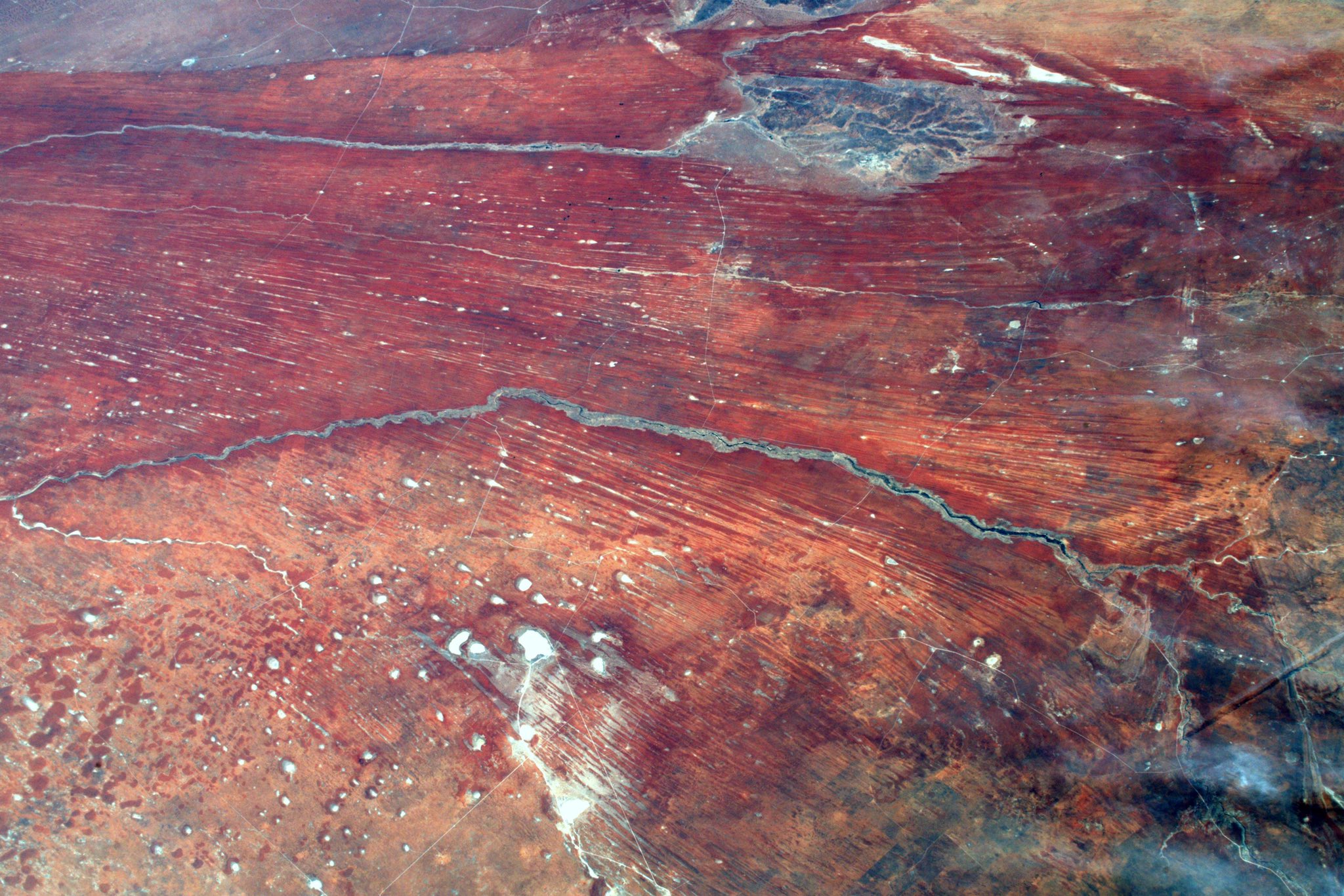Astronaut Andrew Morgan captured from ISS Kalahari Desert, Namibia.

The Kalahari Desert is a large semi-arid sandy savanna in Southern Africa extending for 900,000km2, covering much of Botswana, as well as parts of Namibia and South Africa. Drainage of the desert is by dry black valleys, seasonally inundated pans, and the large salt pans of the Makgadikgadi Pan in Botswana and Etosha Pan in Namibia. The only permanent river, the Okavango, flows into a delta in the northwest, forming marshes that are rich in wildlife. Ancient dry riverbeds – called omuramba – traverse the central northern reaches of the Kalahari and provide standing pools of water during the rainy season. A semi-desert, with huge tracts of excellent grazing after good rains, the Kalahari supports more animals and plants than a true desert, such as the Namib Desert to the west. There is little rainfall, and the summer temperature is very high. The driest areas usually receive 110-200mm of rain per year, and the wettest just a little over 500mm.
The local scenery on the ground is as follows.

Reference: Andrew Morgan’s Tweet
See earthview photo gallery: LiVEARTH
#LiVEARTH http://livearth.space/ #Earth #EarthFromSpace #overview #perspective